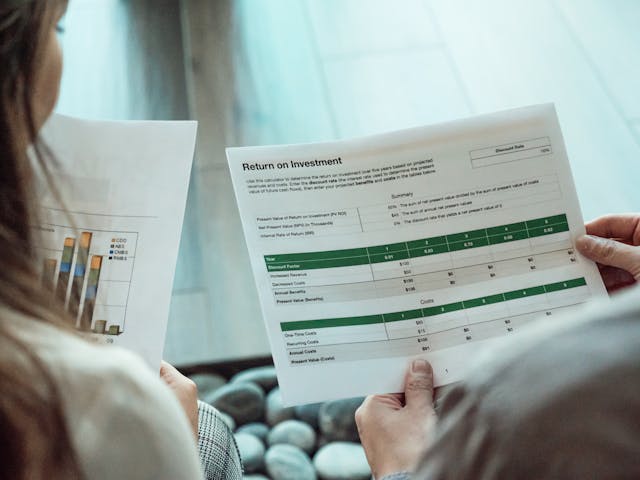Managing a property portfolio comes with the significant responsibility of ensuring the safety and security of your assets, tenants, and financial investments. As property management evolves, so do the threats—ranging from physical intrusions to cybersecurity breaches. Implementing advanced security tactics is crucial for safeguarding your portfolio against these risks.
This guide provides in-depth strategies for enhancing property management security, focusing on physical protection, cybersecurity, and proactive risk management.
1. Strengthening Physical Security Measures
The first line of defense for any property is its physical security. Ensuring that your buildings and tenants are protected from unauthorized access and physical threats is paramount.
1.1. Access Control Systems
Access control is essential for regulating who enters and exits your properties. Advanced access control systems can significantly enhance security:
- Keyless Entry Systems: Install keyless entry systems, such as key fobs, smart cards, or biometric scanners, to control access to buildings. These systems reduce the risk of lost keys and unauthorized duplication.
- Visitor Management: Implement a digital visitor management system that logs all visitors and provides temporary access codes or passes. This ensures that only authorized individuals can enter the property.
- Remote Access Control: Use cloud-based access control systems that allow you to monitor and manage entry points remotely. This is particularly useful for multi-property portfolios where centralized management is required.
1.2. Surveillance and Monitoring
Continuous monitoring of your properties helps deter criminal activity and provides evidence in case of incidents:

- High-Definition Security Cameras: Install high-definition (HD) security cameras in key areas such as entrances, exits, parking lots, and common areas. Ensure cameras have night vision and wide-angle lenses for comprehensive coverage.
- Smart Surveillance Systems: Use smart surveillance systems that incorporate artificial intelligence (AI) for real-time threat detection. These systems can automatically detect suspicious behavior, unauthorized access, or loitering and alert security personnel.
- Integrated Alarm Systems: Connect your surveillance system to integrated alarm systems that trigger alerts during unauthorized access attempts. Ensure alarms are monitored by a security company that can respond quickly to incidents.
1.3. Perimeter Security
Securing the perimeter of your properties is critical to preventing unauthorized access before intruders reach the building:
- Fencing and Barriers: Install high-quality fencing and barriers around the perimeter of your property. Choose materials that are durable and difficult to breach, such as steel or wrought iron.
- Motion-Activated Lighting: Use motion-activated lights around the perimeter and in dark areas to deter intruders. These lights can also be connected to surveillance systems to enhance visibility.
- Controlled Entry Points: Limit the number of entry points to your property and secure them with gates, barriers, or bollards. Use electronic access systems to monitor and control these points.
2. Enhancing Cybersecurity
As property management becomes increasingly digital, cybersecurity is an integral part of protecting your assets. Cyber threats can lead to data breaches, financial loss, and operational disruptions, making it crucial to implement robust cybersecurity measures.
2.1. Secure Property Management Software
Property management software is the backbone of your operations. Ensuring that your software is secure protects sensitive data and financial transactions:
- Encryption: Use software that encrypts data both in transit and at rest. Encryption prevents unauthorized access to sensitive information such as tenant records, financial data, and contracts.
- Two-Factor Authentication (2FA): Implement 2FA for all users accessing your property management software. This adds an extra layer of security by requiring a second form of identification beyond a password.
- Regular Software Updates: Keep your property management software and all related applications up to date. Regular updates often include security patches that protect against the latest threats.
2.2. Protecting Tenant Data
Protecting tenant data is not only a legal obligation but also a trust-building measure. Data breaches can result in significant financial penalties and reputational damage:
- Data Access Controls: Restrict access to tenant data to only those employees who need it for their work. Implement role-based access controls to ensure that data is only accessible by authorized personnel.
- Secure Payment Systems: Use secure, PCI-compliant payment processing systems for rent collection and other financial transactions. Avoid storing sensitive payment information locally, and ensure it is handled by secure, third-party processors.
- Regular Audits: Conduct regular cybersecurity audits to assess the effectiveness of your data protection measures. Address any vulnerabilities promptly and ensure that your practices comply with relevant data protection regulations, such as GDPR or CCPA.
2.3. Employee Training and Awareness
Human error is a leading cause of cybersecurity breaches. Training your employees on best practices can significantly reduce this risk:
- Phishing Awareness Training: Provide regular training on how to recognize and avoid phishing attempts. Use simulated phishing campaigns to test and reinforce employee vigilance.
- Strong Password Policies: Enforce strong password policies that require the use of complex passwords and regular password changes. Encourage the use of password managers to store and manage passwords securely.
- Incident Response Protocols: Train employees on how to respond to cybersecurity incidents, such as data breaches or ransomware attacks. Ensure they know who to contact and what steps to take to contain the threat.
3. Proactive Risk Management
Preventing security incidents is not just about reacting to threats but also about anticipating and mitigating potential risks before they materialize.
3.1. Regular Risk Assessments
Conducting regular risk assessments helps you identify potential security vulnerabilities and take steps to address them:
- Physical Security Audits: Regularly inspect your properties to identify weak points in physical security, such as damaged locks, inadequate lighting, or malfunctioning cameras. Address these issues promptly to maintain a secure environment.
- Cybersecurity Risk Assessments: Work with cybersecurity experts to conduct regular risk assessments of your digital infrastructure. Identify potential entry points for cyberattacks and implement measures to strengthen them.
- Emergency Preparedness: Assess your readiness for emergencies, such as fires, natural disasters, or security breaches. Ensure that you have up-to-date emergency plans in place and that all staff are trained on their roles and responsibilities.
3.2. Insurance and Legal Protections
Insurance and legal protections are your safety nets in case a security breach does occur:
- Property Insurance: Ensure that your properties are adequately insured against theft, vandalism, and natural disasters. Review your coverage regularly to ensure it meets your needs.
- Cyber Insurance: Consider purchasing cyber insurance to cover losses resulting from data breaches, cyberattacks, or other digital threats. Cyber insurance can also cover the costs of legal fees, notification expenses, and business interruption.
- Legal Compliance: Stay up-to-date with relevant laws and regulations governing property security and data protection. Ensure that your security measures comply with all applicable laws to avoid legal liability.
3.3. Incident Response Planning
Having a well-defined incident response plan ensures that you can quickly and effectively respond to security incidents:
- Incident Response Team: Establish a dedicated incident response team responsible for managing security incidents. This team should include members from security, IT, legal, and public relations.
- Response Procedures: Develop clear procedures for responding to different types of security incidents, such as break-ins, data breaches, or natural disasters. Include steps for containment, communication, and recovery.
- Communication Plans: Prepare communication plans for informing tenants, employees, and stakeholders in the event of a security breach. Clear and timely communication can help mitigate the impact of the incident and maintain trust.
4. Leveraging Technology for Advanced Security
Technology is a powerful ally in property management security. By leveraging the latest tools and innovations, you can enhance your security measures and stay ahead of emerging threats.
4.1. Smart Building Technology
Smart building technology integrates various systems to create a more secure and efficient environment:
- IoT Security Devices: Use Internet of Things (IoT) devices, such as smart locks, sensors, and cameras, to monitor and control security in real-time. IoT devices can provide instant alerts and allow remote management of security systems.
- Building Automation Systems (BAS): Implement a BAS that integrates HVAC, lighting, access control, and security systems. This allows for centralized control and monitoring, making it easier to manage and secure the property.
- Energy Management: Use smart meters and energy management systems to monitor energy usage and detect anomalies that could indicate tampering or unauthorized access.
4.2. Artificial Intelligence (AI) and Machine Learning (ML)
AI and ML can revolutionize property management security by automating threat detection and response:
- Predictive Analytics: Use AI-driven predictive analytics to identify potential security threats before they occur. By analyzing patterns and trends, AI can help you anticipate and prevent incidents.
- Automated Monitoring: Deploy AI-powered monitoring systems that analyze security camera feeds, access logs, and other data in real-time. These systems can detect suspicious behavior and automatically trigger alerts or lockdowns.
- Cybersecurity Automation: Use AI to automate cybersecurity tasks, such as threat detection, incident response, and vulnerability management. AI can quickly identify and respond to cyber threats, reducing the risk of a successful attack.
5. Fostering a Security-Conscious Culture
Security is not just about technology and procedures; it’s also about people. Building a security-conscious culture is essential for maintaining long-term protection.

5.1. Employee Engagement
Engage employees at all levels in your security efforts to create a shared responsibility for protecting the property:
- Security Awareness Programs: Develop ongoing security awareness programs that educate employees on the importance of security and their role in maintaining it. Include regular training sessions, workshops, and informational resources.
- Feedback Mechanisms: Encourage employees to provide feedback on security practices and report any potential vulnerabilities or incidents. Create an open environment where security concerns are taken seriously.
5.2. Tenant Involvement
Tenants also play a crucial role in property security. Involve them in your security efforts to foster a community-focused approach:
- Tenant Security Policies: Establish clear security policies for tenants, outlining their responsibilities, such as reporting suspicious activity or adhering to access control procedures.
- Community Watch Programs: Create community watch programs that encourage tenants to look out for each other and report any security concerns. Regular meetings and communication can strengthen the sense of community and security.
- Security Workshops: Offer workshops or informational sessions for tenants on topics such as personal safety, cybersecurity, and emergency preparedness. Educated tenants are more likely to contribute to a secure environment.
Conclusion
Securing your property portfolio requires a multifaceted approach that combines physical security, cybersecurity, and proactive risk management. By implementing advanced tactics such as access control systems, smart surveillance, and AI-driven security solutions, you can protect your assets from a wide range of threats. Additionally, fostering a culture of security-consciousness among employees and tenants ensures that everyone plays a part in maintaining a safe and secure environment. In an increasingly complex security landscape, staying ahead of potential risks is key to safeguarding your investments and ensuring the long-term success of your property management operations.
